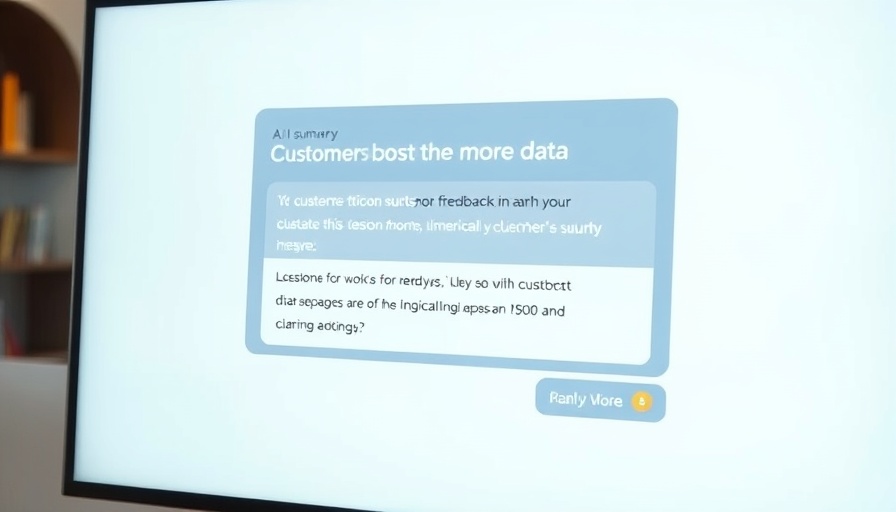
Understanding the Distinction: AI Agent vs. Generative AI
The world of artificial intelligence (AI) can be confusing, especially for business owners looking to integrate these technologies into their operations. Two prominent categories have emerged: AI agents and generative AI. While they seem similar, they serve distinct purposes and offer unique value to businesses, particularly for those scaling operations and seeking efficiency.
What is an AI Agent?
AI agents are software that can perform specific tasks autonomously by utilizing predefined rules and parameters. They excel in environments where tasks are repetitive or follow a fixed pattern. For instance, an AI agent can be programmed to handle customer inquiries, monitor sales data for anomalies, or manage basic project management tasks. By automating these processes, businesses can free up resources and focus on growth strategies.
Generative AI: Creativity in Action
Conversely, generative AI represents a leap forward in creative capabilities. Unlike AI agents, which typically operate within a specific framework, generative AI can create entirely new content based on patterns it recognizes from existing data. This can include everything from writing product descriptions and generating marketing campaigns to designing graphics and developing software code. Such versatility is increasingly valuable for businesses looking to innovate and differentiate themselves in crowded markets.
Real-World Applications for Mid-Sized Companies
For business owners generating between $2M and $10M+, understanding how to leverage both AI agents and generative AI can lead to significant advancements in operational efficiencies and customer engagement. For example, an AI agent may facilitate smoother project management through automated reminders and updates, ensuring tasks stay on track.
Conversely, generative AI can enhance product development by rapidly prototyping ideas and refining marketing strategies, enabling companies to respond swiftly to market changes. This dual approach not only reduces overhead costs but also cultivates a proactive organizational culture.
Collaboration Tools Enhanced by AI
Integrating these AI technologies within software tools can enhance collaboration across teams. Platforms that incorporate AI can analyze workflows to recommend optimizations, thus saving time while increasing productivity. Business owners should explore collaboration tools that feature both AI agents for task automation and generative AI for content creation, ensuring their operations remain agile and competitive.
The Future: AI in Business Strategy
As businesses continue to grow and adapt, the role of AI will only expand. Employing AI agents can help maintain operational order, while generative AI can facilitate rapid innovation. By understanding the strengths of each and how they complement one another, business owners can create strategies that are robust and resilient in the face of evolving challenges.
In conclusion, embracing both AI agents and generative AI will not only help streamline processes but also drive product development and foster collaboration within teams. As businesses prepare for future demands, leveraging these technologies will be critical for sustained success.
Maybe now is the time to re-evaluate your business operations and explore how AI can transform the way you work. Implementing these technologies could be the solution you need for scaling your operations effectively. Don't miss out on the opportunity to enhance efficiency — consider reevaluating your current processes and integrating AI into your workflows today!
 Add Row
Add Row  Add
Add 



Write A Comment